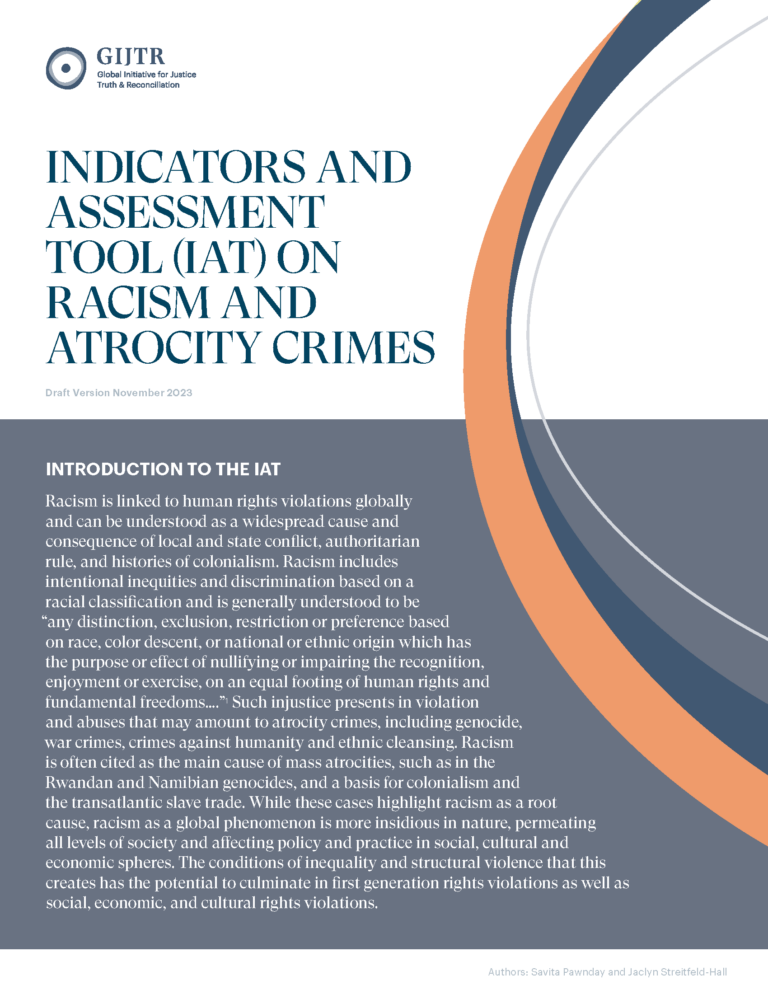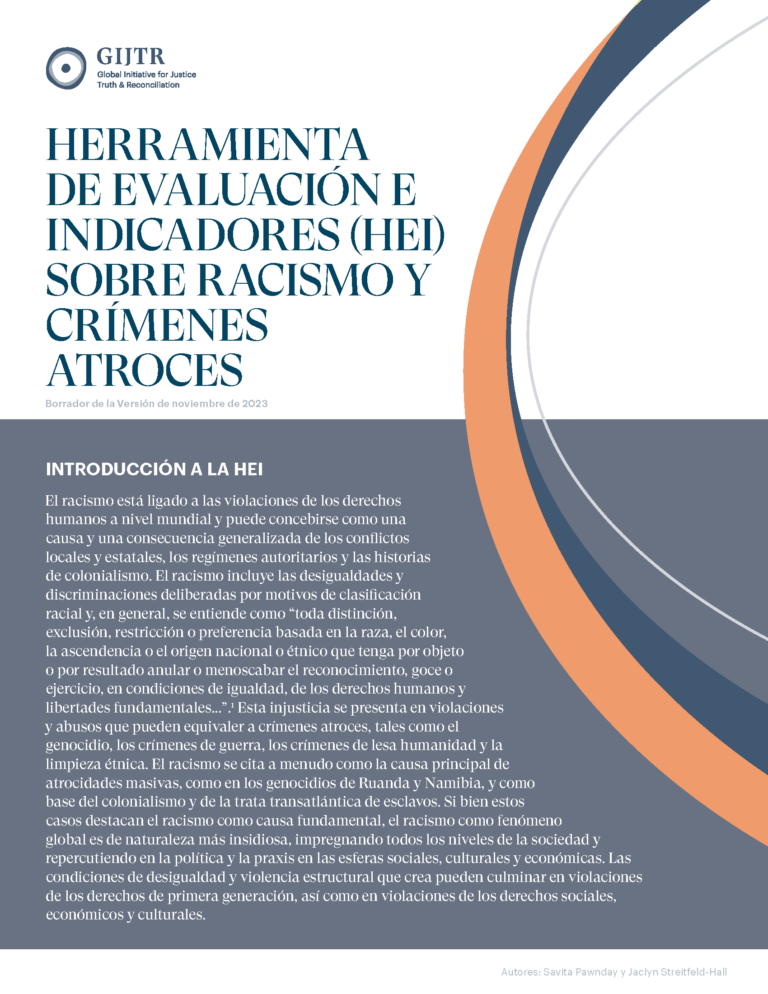INDICATORS AND ASSESSMENT TOOL (IAT) ON RACISM AND ATROCITY CRIMES
This document seeks to assess the ways in which racism, if not addressed, could lead to atrocity crimes. Racism against particular racial and ethnic groups has resulted in the creation
of structures and the adoption of policies, practices and laws that have for centuries subjected individuals and groups to crimes that have shocked the conscience of humanity. The following document provides a toolkit with indicators to help in assessing the ways in which racism could contribute to the risk of atrocity crimes. To help demonstrate how to utilize the toolkit as an assessment tool, the document can be read in tandem with case studies on five country situations (Colombia, South Africa, Namibia, Brazil and Sri Lanka) that highlight how racism increased the risk of atrocities perpetrated against particular populations.



